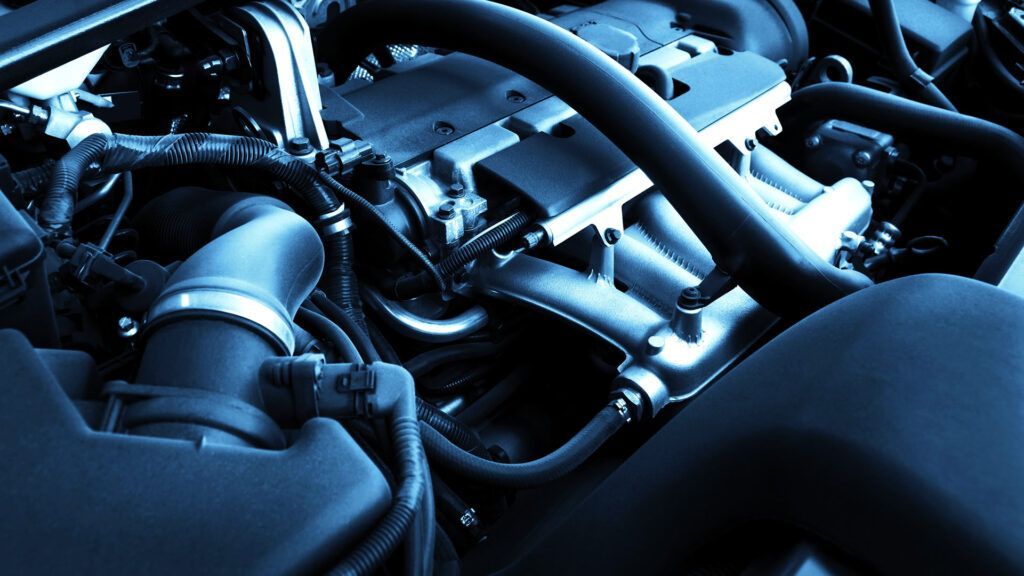Introduction
Mechanical rubber products have become indispensable in various industries, offering a unique combination of flexibility, durability, and resilience. This delves into the world of mechanical rubber, its applications, and the role of conductivity in coatings, highlighting the innovative strides that have been made in this dynamic field.
1. Understanding Mechanical Rubber
Mechanical rubber refers to a class of elastomers commonly used to manufacture a diverse range of products due to their remarkable properties. Elastomers, such as natural rubber and synthetic rubber, exhibit excellent elasticity, making them ideal for applications that require flexibility and resilience. Mechanical rubber products include seals, gaskets, conveyor belts, hoses, and more, serving critical functions in industries like automotive, aerospace, construction, and manufacturing.
2. Applications of Mechanical Rubber Products
- Automotive Industry
Mechanical rubber products play a crucial role in the automotive sector, where they are employed in various components, including seals, gaskets, O-rings, and vibration isolators. Their ability to withstand harsh conditions, resist abrasion, and provide effective sealing solutions makes them integral to the smooth functioning of vehicles.
- Aerospace Sector
In the aerospace industry, mechanical rubber finds applications in components that demand high-performance materials. Seals for aircraft doors, gaskets for fuel systems, and vibration isolators for sensitive equipment showcase the versatility of mechanical rubber products in ensuring the reliability and safety of aerospace technologies.
- Construction and Infrastructure
The construction sector relies on mechanical rubber products for applications such as anti-vibration mounts, expansion joints, and seals. These components contribute to the structural integrity of buildings and infrastructure, absorbing shocks and accommodating movements caused by factors like temperature variations.
- Manufacturing Processes
In manufacturing, mechanical rubber products are employed in conveyor belts, hoses, and other components that facilitate the movement of materials and fluids. Their durability, flexibility, and resistance to wear make them essential for optimizing production processes across various industries.
3. Exploring the Chemistry of Mechanical Rubber
Understanding the chemistry of mechanical rubber is crucial to appreciating its unique properties. The polymer chains in rubber are connected by cross-links, providing elasticity and allowing the material to return to its original shape after deformation. The presence of double bonds in the polymer structure contributes to the resilience of rubber.
- Natural Rubber vs. Synthetic Rubber
Natural rubber is derived from the latex sap of certain trees, while synthetic rubber is produced through chemical processes. Both types exhibit similar elastomeric properties, but synthetic rubber offers advantages such as improved chemical resistance and temperature stability, allowing for tailoring to specific applications.
- Vulcanization
Vulcanization is a key process in enhancing the properties of rubber. By adding sulfur and applying heat, the rubber undergoes cross-linking, resulting in increased strength, elasticity, and resistance to wear. Vulcanization transforms raw rubber into a durable and versatile material suitable for a wide range of applications.
4. The Role of Conductivity in Coatings
- Overview of Conductive Coatings
Conductive coatings are designed to facilitate the flow of electricity, making them essential in various technological applications. In the realm of mechanical rubber products, the integration of conductivity into coatings opens up new possibilities for enhanced performance and functionality.
- Applications of Conductive Coatings in Mechanical Rubber Products
a. EMI Shielding
Electromagnetic interference (EMI) can adversely affect electronic components. Conductive coatings on mechanical rubber products, such as gaskets and seals, provide EMI shielding, ensuring the integrity of sensitive electronic devices in industries like telecommunications and aerospace.
b. Antistatic Properties
In environments where static electricity poses a risk, such as in manufacturing processes involving flammable materials, antistatic conductive coatings on rubber components prevent the buildup of static charges. This is crucial for maintaining safety and preventing damage to electronic equipment.
c. Wear Resistance and Lubrication
Conductive coatings can enhance the wear resistance of mechanical rubber products, extending their lifespan in applications with abrasive conditions. Additionally, these coatings can provide lubrication properties, reducing friction and improving the overall efficiency of moving parts.
5. Innovations in Mechanical Rubber Products
- Smart Rubber
Advancements in materials science and technology have led to the development of smart rubber, which incorporates sensors or actuators into the rubber matrix. This innovation opens up opportunities for real-time monitoring of mechanical components, enabling predictive maintenance and enhancing overall system performance.
- Sustainable Rubber Solutions
As environmental concerns grow, the rubber industry is exploring sustainable alternatives. Bio-based rubber, recycled rubber, and eco-friendly manufacturing processes contribute to reducing the environmental impact of mechanical rubber products while maintaining their performance and reliability.
Advantages of Conductivity in Coatings
Conductivity in coatings offers a multitude of advantages across various industries, providing enhanced functionality and performance in a wide range of applications.
- Electromagnetic Interference (EMI) Shielding
One of the primary advantages of conductive coatings is their ability to provide effective EMI shielding. EMI can disrupt the functioning of electronic devices and systems by interfering with electromagnetic signals. Conductive coatings on surfaces, such as those used in electronic enclosures, gaskets, and seals, create a protective barrier that prevents EMI from affecting sensitive components. This is crucial in industries like telecommunications, aerospace, and medical devices where electronic equipment must operate without interference.
- Antistatic Properties
Conductive coatings help dissipate static electricity, preventing the accumulation of static charges on surfaces. In environments where static discharge could damage electronic components or pose safety risks, such as manufacturing processes involving flammable materials, antistatic conductive coatings play a vital role. This feature is particularly important in sectors like electronics manufacturing, where even a small static discharge can lead to significant problems.
- Wear Resistance Enhancement
The incorporation of conductivity in coatings can enhance the wear resistance of surfaces. This is especially valuable in applications where mechanical components are subject to abrasion and friction. Conductive coatings not only protect against wear but also contribute to the longevity and durability of materials. Industries such as automotive, manufacturing, and mining benefit from this advantage, as it helps extend the lifespan of components and reduces maintenance costs.
Conclusion
Mechanical rubber products continue to play a pivotal role in various industries, providing solutions to challenges related to flexibility, durability, and resilience. The integration of conductivity in coatings further expands the capabilities of these products, enabling them to meet the evolving needs of modern technologies. As research and innovation in the field progresses, the future promises even more sophisticated and sustainable mechanical rubber solutions, reinforcing their status as indispensable components across diverse sectors.
You may also like
-
Empower Yourself with Knowledge: Access Thousands of Repair Manuals Online
-
Adapting to Changing Regulations in the Auto Industry – Mark Gilbert ATN
-
Securing Power: The Role of Battery Trays
-
Everything You Need to Know About Auto Sunroof Repair: Imperium Auto Glass in Houston.
-
Why Are Vehicle Parts So Exorbitant?
 Risk Takers’ Playground: Navigating the Highs and Lows of Hedge Fund Hype
Risk Takers’ Playground: Navigating the Highs and Lows of Hedge Fund Hype  Learn More About Binance
Learn More About Binance  Mastering the Stock Market: Insights from a Professional Investor – Kavan Choksi Professional Investor
Mastering the Stock Market: Insights from a Professional Investor – Kavan Choksi Professional Investor 

